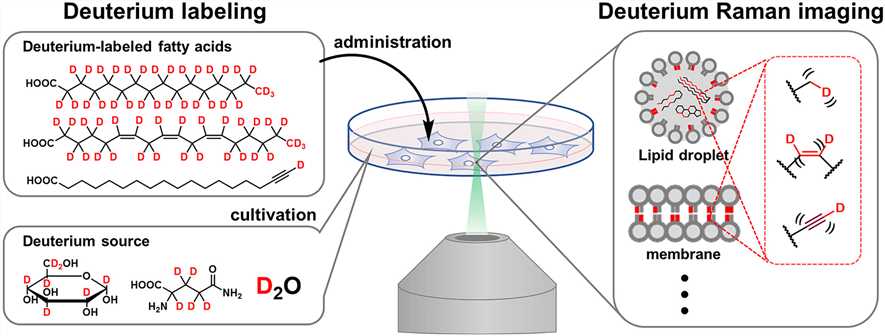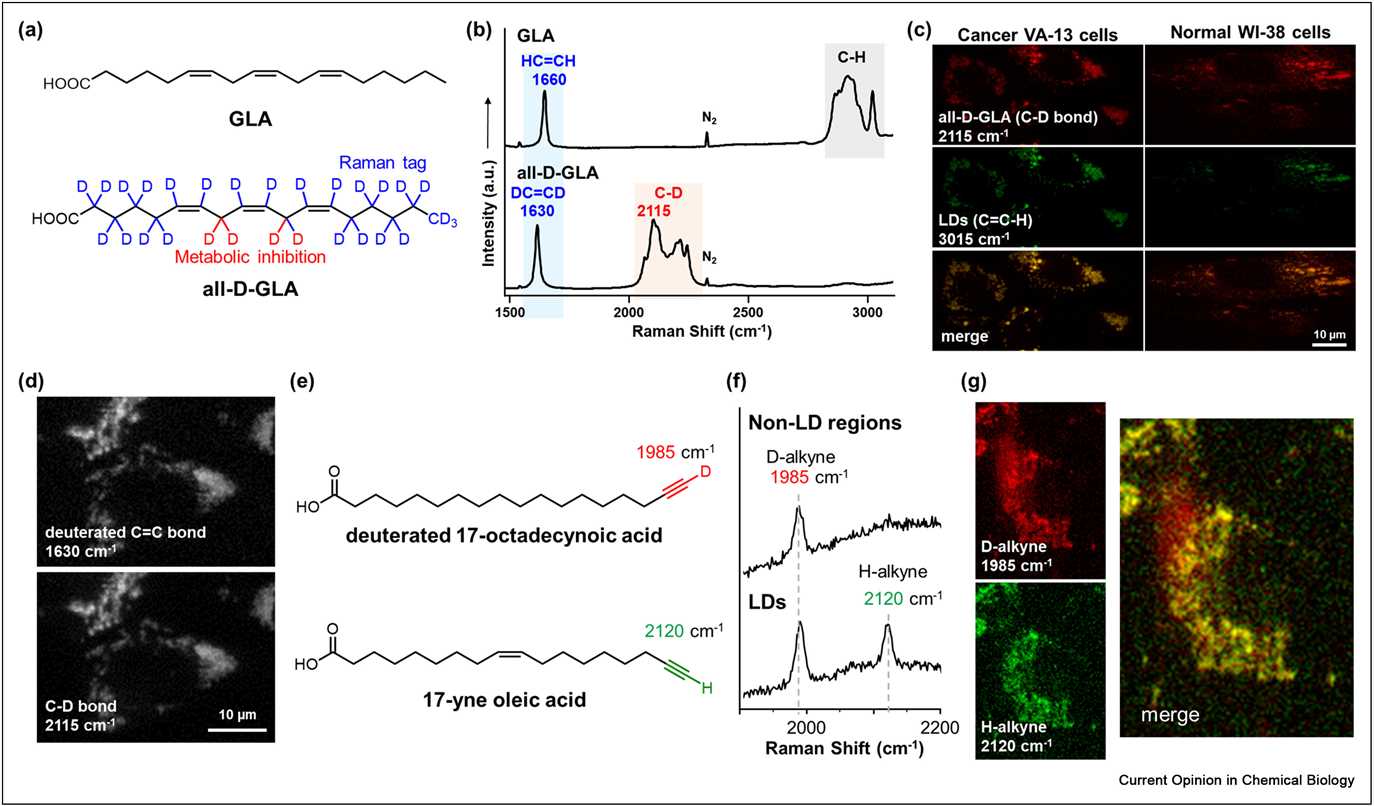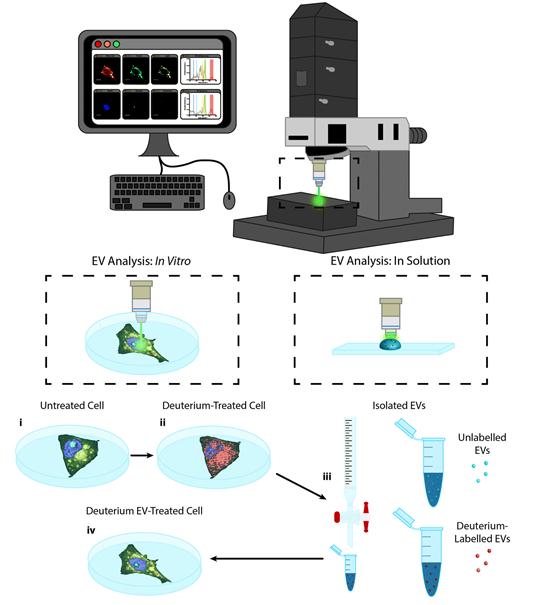Deuterium Raman Imaging
Background & Overview
As a powerful imaging tool for visualizing and studying the spatiotemporal distribution of chemicals, Raman microscopy has had a major impact in many scientific disciplines. While label-free imaging has always been the mainstream strategy in Raman microscopy, recent developments and applications of vibrational/Raman labeling have enabled the study of a wide range of of small biomolecules, resulting in strong excitement in biomedical imaging.
Deuterium-labeled Raman imaging from BOC Sciences provides a broadly applicable platform for studying the imaging distribution and dynamics of small molecules such as glucose, lipids, amino acids, nucleic acids, and drugs. And these small molecules would otherwise be difficult to monitor by other means. Our technology aims to reveal broader biomedical questions.
 Figure 1. Deuterium Raman imaging.[1]
Figure 1. Deuterium Raman imaging.[1]
Our Services
Lipid Analysis
Since deuterium is a stable isotope of hydrogen, deuterium labeling has little effect on the biological activity of the target. Therefore, BOC Sciences utilizes deuterium-labeled fatty acids, sterols, choline and phospholipids in combination with Raman imaging for lipid analysis. Our technique can successfully discriminate structurally very similar lipids and observe distinct subcellular localizations. Not only that, but we can use deuterated precursors to elucidate intracellular metabolism, such as de novo lipogenesis, for rapid screening of cell viability and study of drug response.
 Figure 2. Observation of fatty acid metabolism by deuterium labeling.[1]
Figure 2. Observation of fatty acid metabolism by deuterium labeling.[1]
Live Cell Molecular Imaging
Compared with traditional imaging techniques, Raman spectroscopy has the advantage of comprehensively obtaining molecular information from cells. Our novel general platform enables live-cell imaging, quantification, and spectroscopic analysis based on carbon-deuterium (C-D) labels that are much smaller than fluorescent labels coupled with spontaneous Raman scattering with high spatial and temporal resolution. Our tests are both sensitive and specific. We can also provide molecular imaging services of extracellular vesicles in vitro.
 Fig. 3 Raman spectroscopic imaging and analysis of metabolically labelled EVs in solution and in vitro.[2]
Fig. 3 Raman spectroscopic imaging and analysis of metabolically labelled EVs in solution and in vitro.[2]
Why Us?
BOC Sciences continues to pursue advances in imaging methods and deuterium labeling techniques, and we are equipped with high-quality lasers, high-sensitivity CCD cameras, and high-quality optics that enable efficient detection.
If you are interested in our services, please contact us immediately, then fill in the complete inquiry form, and we will reply to you as soon as possible.
References
- Egoshi S, et al. Deuterium Raman imaging for lipid analysis. Current Opinion in Chemical Biology. 2022, 70: 102181.
- Horgan C C, et al. Molecular imaging of extracellular vesicles in vitro via Raman metabolic labelling. Journal of Materials Chemistry B. 2020, 8(20): 4447-4459.

 Figure 1. Deuterium Raman imaging.[1]
Figure 1. Deuterium Raman imaging.[1] Figure 2. Observation of fatty acid metabolism by deuterium labeling.[1]
Figure 2. Observation of fatty acid metabolism by deuterium labeling.[1] Fig. 3 Raman spectroscopic imaging and analysis of metabolically labelled EVs in solution and in vitro.[2]
Fig. 3 Raman spectroscopic imaging and analysis of metabolically labelled EVs in solution and in vitro.[2]
